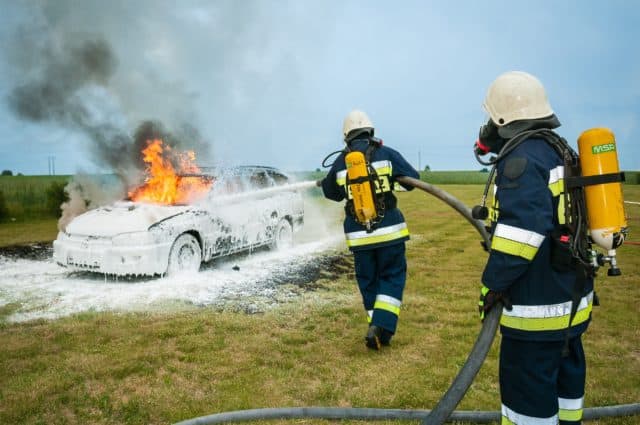The scenario happens all too often. Lord knows, it’s happened to me; I must be the queen of the overheated engine!
You know the deal! You pass by a stranded motorist looking at the front end of a car with smoke billowing out as if the engine is on fire. It’s probably me!
Usually, it signals that the car is overheated and if you aren’t careful, the same thing can happen to you and your car’s engine can be irreversibly damaged.
It’s easy to notice when the car’s engine is running a little too hot. You can see the temperature gauge on your dashboard and when the needle is not in its normal position and pointing much higher towards the “hot” direction, that’s when you know your vehicle is not running as it should be.
In many cases, it’s fairly easy to fix even though there are times when it’s fairly expensive to repair.It’s important to know the basics of how to keep your engine cool.
Luckily, here are examples of what could cause a car to overheat and what you can do about it. Keep in mind that I’m no expert but I conducted plenty of research on the topic:
1. Your engine coolant is low. This is the most common cause of an overheated engine and the level should be checked regularly, especially in the summer. It’s amazing how many people never pop open the hood of their vehicles to check something so easy to check and something that can prevent expensive damage. If you don’t have enough coolant in your vehicle’s system, you should know that your engine relies on this liquid to cool down the engine constantly. If you have some sort of coolant leak, your vehicle will probably need to be towed to a mechanic right away if you want to avoid permanent damage to your engine.
2. Your electric fan is malfunctioning. This is a very common cause of overheating and if by any chance you are one of those few people who check under their hood, you may find that your radiator fan is not working. A great way to usually test if your fan works is to turn your car’s air conditioner “on.” Most vehicles’ fans turn on when you put the AC, so it’s the first thing to check to see if the fan works or not.
3. The radiator fan switch is not working. This is the little thingie that comes on when your engine coolant gets up to a certain temperature so that it can prevent overheating. You may or may not be able to test this out yourself and if you are not mechanically inclined, I don’t recommend you tackle it yourself. However, if you’re good with tools, the way you can tell if the bad radiator fan switch is the cause is to find the wiring harness, disconnect it, and then connect a jumper wire to the harness contacts. After doing so, if you see the fan turn on, then you know you need to replace the switch.
4. Your engine thermostat is not opening up. Your engine’s thermostat is set so that when the engine reaches a certain level of heat, it gives a signal so that coolant can flow through your radiator and keep the engine temperature at the level it’s supposed to maintain. If it doesn’t open at the right time or not at all, this may easily be the cause of an overheated engine. Aside from taking your car to a mechanic, the easiest way to tell if the thermostat is the problem is when you are traveling at highway speeds and it’s still overheating.
5. Your fan belt may be broken. If your radiator fan is not working, your fan belt may be broken and it simply won’t work! This can spell trouble for you and the good news is that it’s easy to spot when it’s broken and it’s usually inexpensive to repair at a mechanic you can trust!
6. A clogged radiator. Once your car gets over 50,000 to 60,000 miles, your radiator may start to clog up a bit and a great way to ward off this potential problem is to have your radiator flushed out every single year from now on.
A good rule of thumb to be on the safe side is; if you notice your engine is running hot, take your car immediately to your mechanic if it is safe to do so. Another thing you can do is to find a friend, neighbor, or family member to help you out before having to take your car in for an expensive repair.





